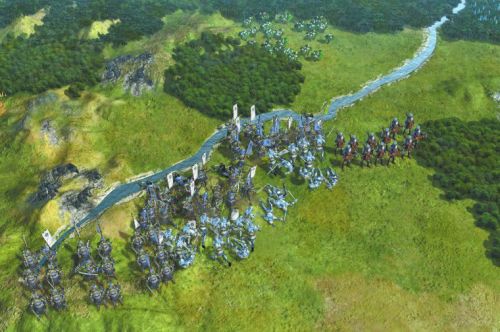Welcome to a new ‘Civilization’
Published 8:34 am Saturday, September 25, 2010

- In this video game image released by 2K Games, two cultures go to war in a scene from, "Civilization V." (AP Photo/2K Games)
When legendary designer Sid Meier and his Firaxis Games studio produced a console version of their PC classic Civilization in 2008, purists howled: How dare they take one of the brainiest, most challenging games out there and dumb it down for joystick-wielding Neanderthals?
As it turns out, Civ Lite (or, to use its actual title, Civilization Revolution) was the best thing that could have happened to the 20-year-old franchise. Those who had never played got a solid, newbie-friendly introduction. Those who no longer had 10 hours to spare for a proper Civ game could get a fix in about two hours.
Most important, however, is that lessons learned from the streamlining of Civ Rev have been applied to the new PC installment, Civilization V (2K Games, for PC, $49.99). If you liked the look and feel of the console version, youll feel right at home here.
The goal remains the same: Build a civilization that will dominate the planet. You pick one of 18 historic leaders, from familiar names like Napoleon and George Washington to others, like Askia of the West African Songhai empire, who are new to the series. Each culture has a few unique abilities Germany, for example, can build Panzers but they will have marginal effect on your overall strategy.
You start with a small parcel of land and two groups of followers, settlers and warriors. The settlers stay home and build your capital city, while the warriors venture forth and explore the space nearby. You then assign workers to cultivate your land, and train ever-more powerful troops to attack or defend against your neighbors.
There are many, many other ways to expand your empire. Starting with simple technology such as pottery and animal husbandry, you can work your way up to nuclear power and space travel. Social policies aid growth in different ways: Piety, for example, makes your citizens happier, while rationalism accelerates scientific progress. And you can give your homeland a little pizazz by building wonders like the Taj Mahal or the Sistine Chapel.
Finally, there are several paths to victory: winning the space race, achieving cultural or diplomatic dominance or crushing your enemies with pure military might. Depending on your starting conditions, such as the size of the map and the number of competing nations, a game can last anywhere between a few hours and a few days. (At the default settings, one game took me about 12 hours.)
It sounds complicated and it is but theres plenty of on-screen help for newcomers, including advisers who suggest possible strategies whenever you ask. Tasks that can be performed by each unit are clearly described, and icons drift down the screen to let you know when major events are happening across the world. Theres no need to consult the dense menus and graphs that may have scared you off in the past; almost every action can be completed from the pretty Civ 5 map screen.
For series veterans, the most substantial gameplay change is the addition of city-states small, freestanding governments with no plans to take over the world. If you help them, theyll chip in with gold or resources; mess with them, however, and they may team up against you. The city-state tasks make nice diversions from the overall conquest.
There are dozens of smaller tweaks that make Civilization V more balanced, more elegant, more fun. Its almost as if Sid Meier and Firaxis read every complaint their fans have ever made, and found a way to fix each one. Imagine that. Four stars out of four.





